How to Find Out What Wine You Like
This post may contain affiliate links. If you click on these links and brand purchases, I may receive a small commission. I only link to products I genuinely trust and recommend. Thank you for your back up.
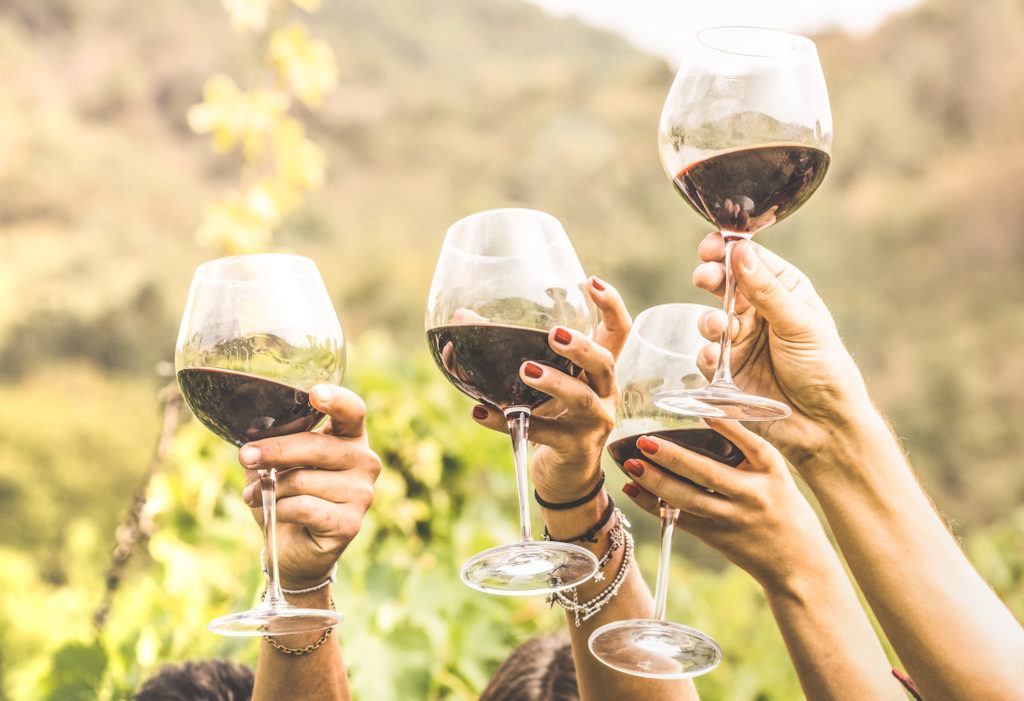
A beginner'southward guide to finding and appreciating wine you beloved with like shooting fish in a barrel to follow tips and guidelines on how to start ownership and drinking wine!
For years after I turned 21, I but drank Pinot Grigio. It was a condom bet; I knew I liked it. And that was plenty.
Most new wine drinkers practise the same thing: play information technology rubber and simply pick one or two wines they know they love.
But recall about information technology similar food. You don't just pick two foods yous like, do you lot? (At least, if you're on this blog and reading this commodity, I hope yous don't!) There are thousands upon thousands of succulent dishes out in that location. Why cut yourself short! Exist curious.
The aforementioned extends to vino. At that place are thousands upon thousands of styles and vineyards and varietals. You lot aren't guaranteed to like them all. But you'll probably like more than just one.
You simply need to discover which styles, vineyards, and varietals you similar best. And that's what I'm going to assist you practise.
Things like smell, flavour, texture, and body tin can all touch your appreciation of vino. The pull a fast one on is really finding which specific characteristics of vino you lot dearest most.
Check out the All-time Summer Wines that are perfect for beginners!
TLDR:
- "Wine for the Confused" by John Cleese (think of it as Wine for Kindergarteners)
- Buy 3 reds and 3 whites
- Taste Exam your selections
- Write words that draw each 1
- Rate them every bit favorite to to the lowest degree favorite
- Accept that rating/word card with yous when you lot go shopping once again
- Ask your local vino store owner to help you lot pick like bottles
"Wine for the Dislocated"

The idea for this post actually came from a wonderful documentary by John Cleese called "Wine for the Dislocated." (I was actually trying to find a sketch he did in At Last The 1948 Show. But my culinary-inclined search history suggested this instead.)
"Wine for the Confused" is a refreshingly light-hearted, 45-minute documentary for people who like wine merely are…well…dislocated past virtually of it. Cleese takes y'all through some of the top red and white varietals and what sets them apart.
Think of information technology as super basic Vino for Pre-Schoolers. The perfect way to just dip your toe into the earth of wine.
The whole affair is a blast to watch. Every bit much for the helpful information as for the fun of watching Cleese traipse around a vineyard with wine spectacles and agreeable anecdotes. I cannot recommend it enough for anyone who wants a vino-themed diversion. And particularly for people who are genuinely curious (and confused) near wine.
I won't spoil it all for you, but in ane moment, Cleese suggests that y'all collect sure descriptive words that will help you when it comes to identifying flavors in wine. Words like: chewy, spicy, fruity, creamy all indicate some property in the glass you're drinking. If you mark down the ones y'all like, and the ones yous don't, you're a step closer to identifying your own vino personal palate!
*Disclaimer: This is even simpler than Wine 101. And, he only covers wines in California. If you're looking for in-depth expertise, this documentary isn't for you. And neither is this article.*
Go the documentary hither!
Finding Your Wine Words:
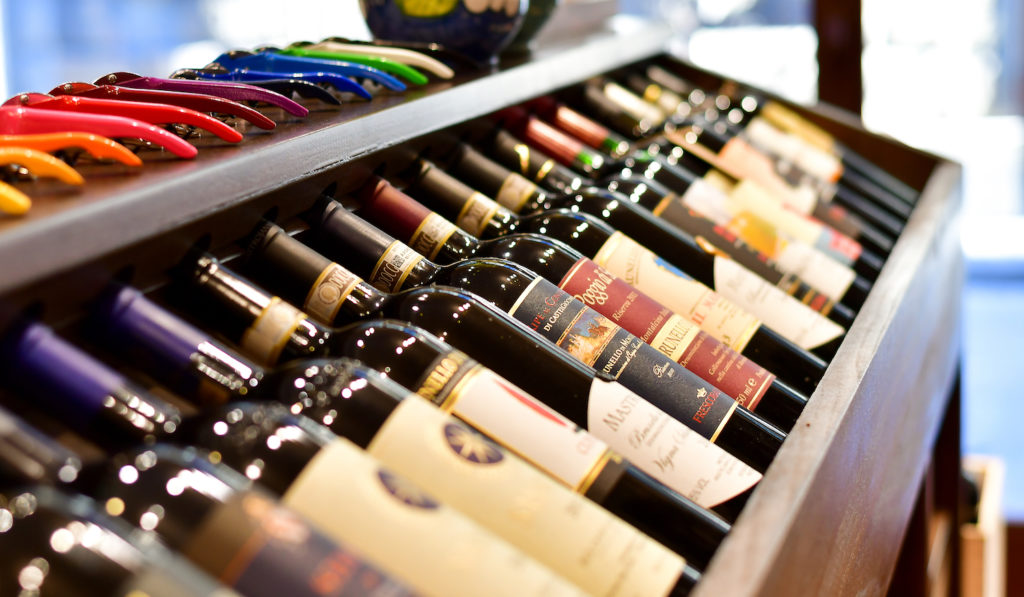
The idea is simple, only in club to detect what your wine words are…you take to beverage some wine. So, where practice you first?
What yous should practice:
Go to the liquor store and buy some bottles of wine. Whatever vino. Make information technology 3 red, iii white. (Or 2 red, two white if the thought of storing six bottles means y'all may have to hire an additional apartment.)
How do yous pick which wines to buy?
Start simple. Go for wines you've heard mentioned over and over: Merlot, Pinot Noir, Chardonnay, Sauvignon Blanc, etc.
Why can't I just ask the shop attendant to help me?
You can. By all means, ask your local liquor store owner to help yous option 3 radically dissimilar reds, and 3 unlike whites.
But there is a chance they volition enquire "what do yous similar." And since the whole indicate is that you don't know what you like and want to find that out, this will lead to confusion. And both of you volition come abroad feeling very silly.
Reason 2 for going it alone at this early on stage? Finding your own words to describe the wine. A wine seller will tell you lot what you lot should taste in a bottle. And when it comes time to taste examination, you want to be focused on what you lot actually taste. Not the words some guy in a shop used to sell it to y'all.
Instead, select 4 to vi different types. Bring them home. And gustatory modality them.
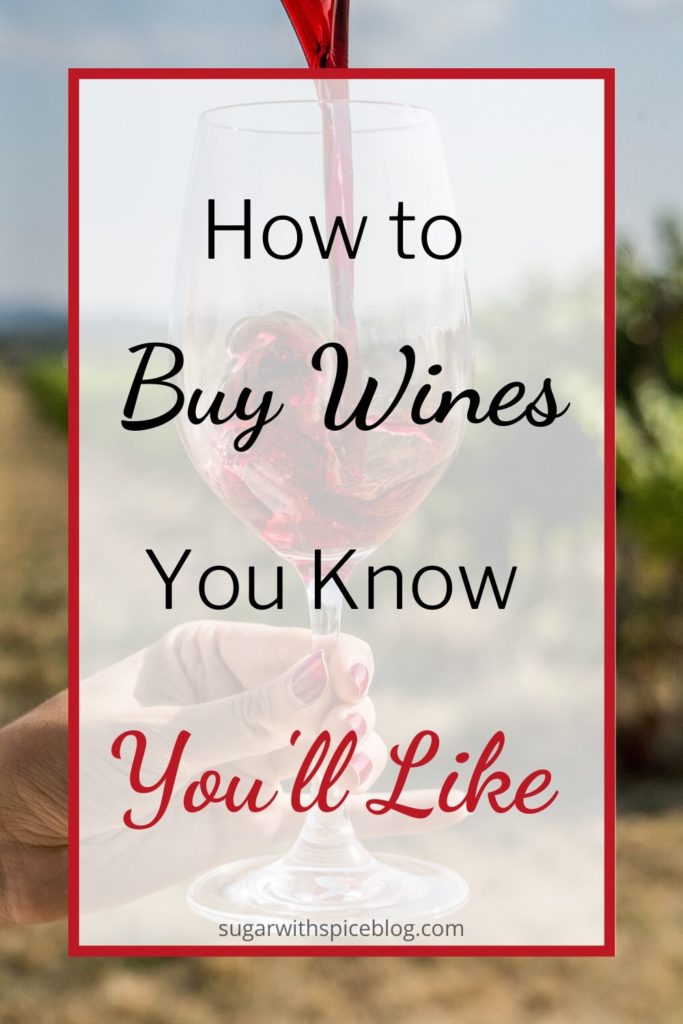
What should yous do with the wines y'all don't like?
Cook with them! You lot won't really be able to taste the wine once it's been all mixed up in a flavorful broth or fancy dish.
- Red wines go excellently with pasta sauces, beefiness marinades, and this simple stove elevation beefiness stew.
- And white wines go very well in white sauces, seafood dishes, or this 1-pan chicken, potatoes, and artichoke goulash!
Tasting your Wines:
Y'all've bought your bottles. Brought them home. Now the serious work begins. You've got to taste these wines and brand note of flavors you lot like.
Let'south go over how to exercise it.
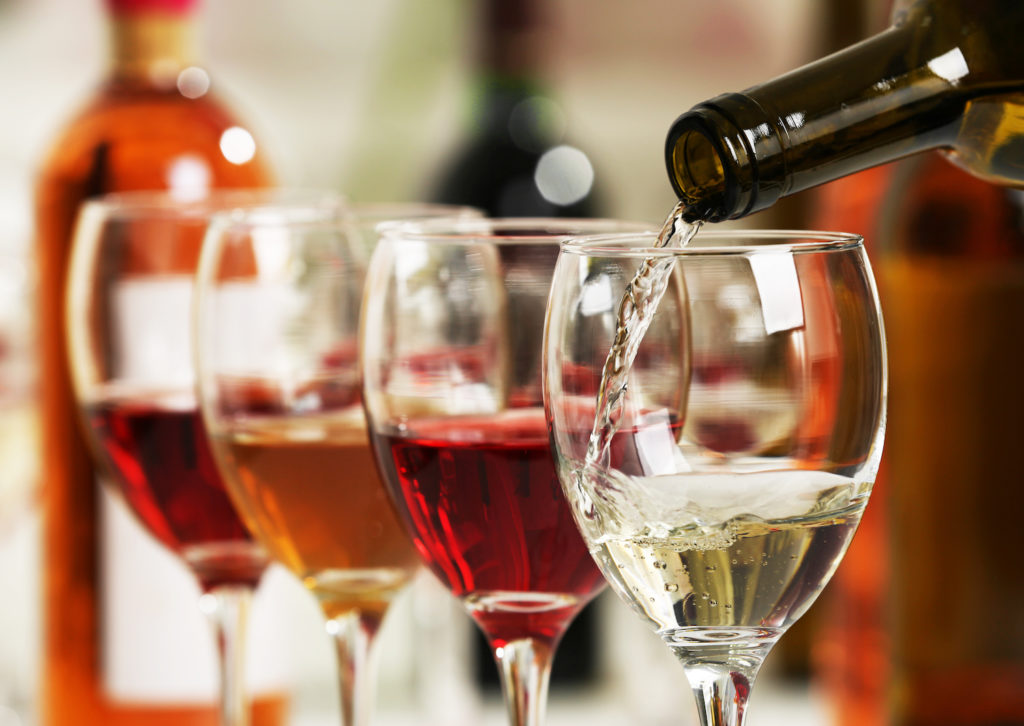
Temperature
You lot've heard the rumors that red wine needs to exist served at room temperature and white wine needs to exist served chilled. While that's generally true, these days we tend to serve vino at the extremes.
Serving Red Vino for Beginners:
Red vino should be served around 65°F. So if y'all keep your house at 75, maybe pop your red wine in the fridge.
Remove it from the fridge nearly an hour before drinking to let information technology warm up. If you're just starting out, you don't need a decanter or annihilation outrageous. Simply make sure you pour your glasses virtually 10 minutes earlier you drink them to let the wine exhale.
Serving White Wine for Beginners:
White wine should be served slightly cooler, around 55°F. But almost of u.s.a. tend to serve it directly out of the fridge. Merely ice wines or very crisp whites should be served fridge-cold.
Instead, well-nigh white should be taken out of the fridge just 10 minutes earlier serving to permit them to warm up slightly and develop more flavor.
Glasses
The shape of your drinking glass tin dramatically affect the flavour of the wine you're serving. That'south why there are well-nigh 25 different glass types. Everything from Burgundy to Port to Standard White to Chardonnay to Flutes to Sauternes… Yes, I agree, it's ridiculous.
Since you're just starting out, I'grand going to presume yous didn't stock up on all of those types beforehand. If you did, go read something else. This article isn't for you. Cocky jerk.
Realistically, all y'all need is a standard white wine drinking glass. Yes, it works for reds too. You desire a design where the rim of the glass is narrower than the bowl. (As well helpful for those of united states who tend to dump things all over our forepart every fourth dimension we take a sip.)
My two favorite options are beneath. I personally love a vino drinking glass with a stem. They just await prettier. And it stops guests from using them for water. (Or milk. Ick.)
But I know stemless glasses are pop. And then for those who have tipping fears, there's ane for yous too.

Classic White Wine Glasses

Archetype Stemless Wine Glasses
All of these dissimilar glasses do serve a purpose. The big one is smell. The shape of a drinking glass changes how the wine hits your nose. And what you smell affects what you taste.
Experimenting with different vino glasses is fun, merely I don't recommend doing it on your ain dime. Instead, run across if you can pick out differences when yous get to fancy restaurants.
And if you find that you admittedly cannot live without Bordeaux, maybe put a set of nice Bordeaux spectacles on your Christmas list.
What Wine Words are yous looking for?
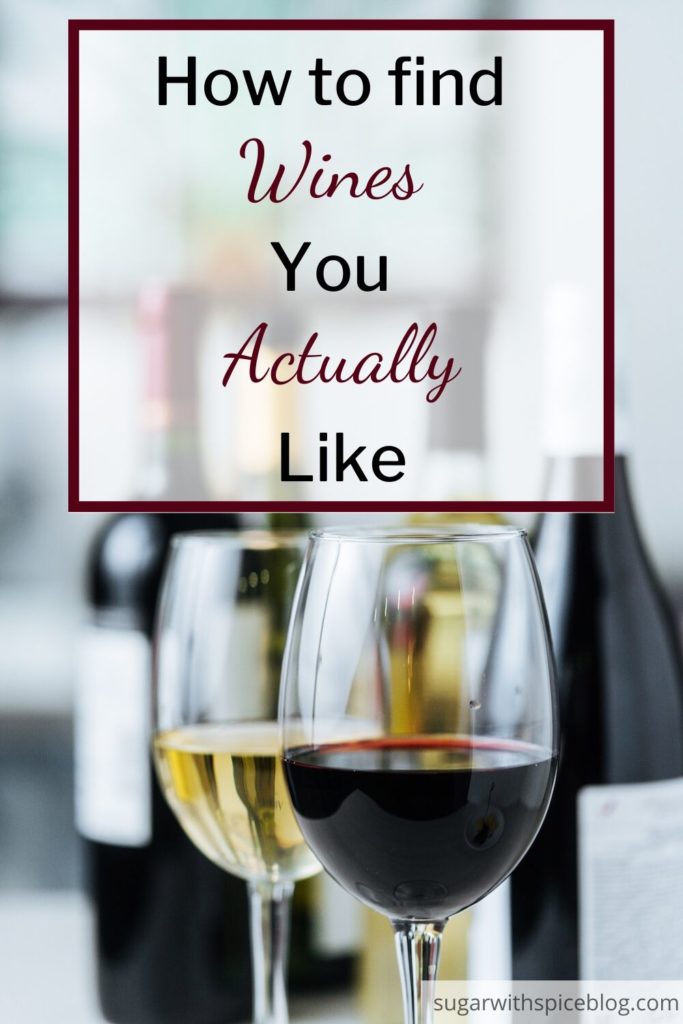
You've got your wine poured in your astonishingly standard glass. You've allow it sit and exhale. You lot're ready to have a sip…wait for information technology… what words are you fifty-fifty supposed to be writing down?! (That is the betoken here after all, as much fun as drinking wine is on its own.)
First, get something to write on. (And something to write with, for anyone who needs actually clear direction.) I prefer notecards, since they are pocket-sized and piece of cake to organize and store for future reference. But you could besides utilize a periodical, loose leaf newspaper, dingy napkins, a crumpled old draft of your screenplay, your tear-stained resume…
Write the color, type, vineyard, and location of your current canteen at the top. While not essential, this will definitely help y'all in the future later on glass #6 when yous're trying to think what you drank.
Now, carve up upward your card into three sections for writing words. Championship them olfactory organ, gustatory modality, and texture.
Nose
The nose section should exist all words regarding how your glass of wine smells. Attempt to include a wide mix of specific and general words. For example, you could say it smells floral. Take that a step further and say it smells like jasmine.
Remember your wine can olfactory property similar more than than one thing, so don't spend besides much fourth dimension trying to narrow things down. Just write what you notice.
Gustation
This section should be all about cats. Kidding. Just if you're dislocated about what to write here, may I refer you to Merriam Webster.
Similar smell, you can take ii conflicting flavors. So if you lot taste some hot spice likewise equally some sweet melons, write it down! This is all nigh your tasting experience.
Texture
A little less self-explanatory, keep in mind how the wine feels in your mouth. You lot can apply words like "heavy" "chewy" "chalky" "crisp" "calorie-free" "fuzzy" "soft," etc.
The more vino you lot taste, the easier information technology is to choice out certain textures. But when you're just starting out write the start thing that comes to mind. No one is going to read it but you!
The clearest instance of "Texture" is found in ruby wines. Cherry wines are made with skins on, which is why they have tannins. Tannins are those difficult, biting notes y'all go in a drinking glass of vino. The part that feels like your whole rima oris is coated afterwards a sip.
So if you effort a glass of crimson and information technology feels "velvety," you know information technology has higher tannins. Don't like that velvety, fuzzy texture? You lot probably adopt less tannic wine.
Don't forget to write whether y'all liked the wine or non. You can do a rating system and rate your bottles on a scale if that helps you.
But I tend to just write "would drinkable once more" or "burn vineyard to the ground."
How to Taste Wine for Beginners
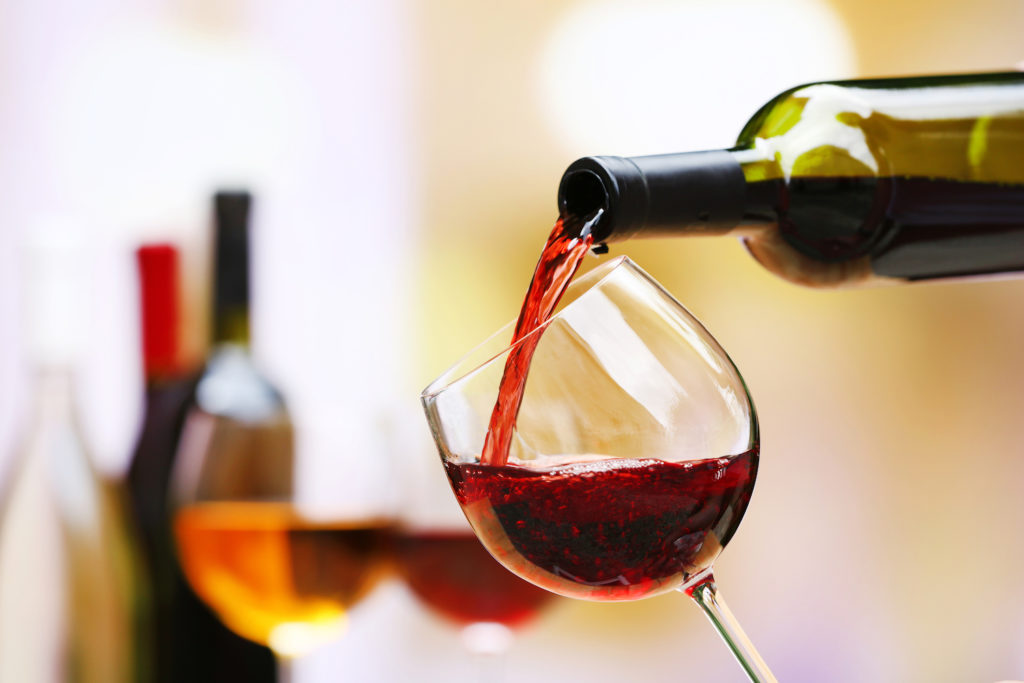
This is probably the part you actually came for, right?
Smell it starting time
Half the joy of tasting comes from smell. (That is not a real statistic.)
Swirl your wine in the glass to get it moving. Don't stick your olfactory organ into the glass. A. This avoids accidentally wetting your nose and B. You just don't go all the subtle notes when you're snorting up wine droplets.
Instead, just gently hover your nose above the glass to get the full range of smells.
Accept a sip (Finally)
The moment you've all been waiting for…take a modest sip. Non a gulp. Let the wine run around your oral cavity. This both aerates the wine and acclimates your mouth to the season of this particular drinking glass. (Do take a notation of your first impression of the drinking glass including flavour and texture!)
Accept a second sip and allow this one to coat your rima oris. You'll be able to option out softer, subtler flavors very hands now.
Sip the rest of your glass slowly
It seems obvious, just chugging your drinking glass doesn't help you taste the subtle flavors whatever better.
A really adept wine volition modify its characteristics equally information technology sits in the glass. The longer it is exposed to air, the more flavors emerge.
I observe this peculiarly truthful of white wines, which often develop a more than tropical, fruity flavor the longer they are left out to warm up and settle.
This is a not bad area to experiment and run into if different temperatures and different breathing times affect your appreciation of the wine.
Reading Wine Bottles for Beginners
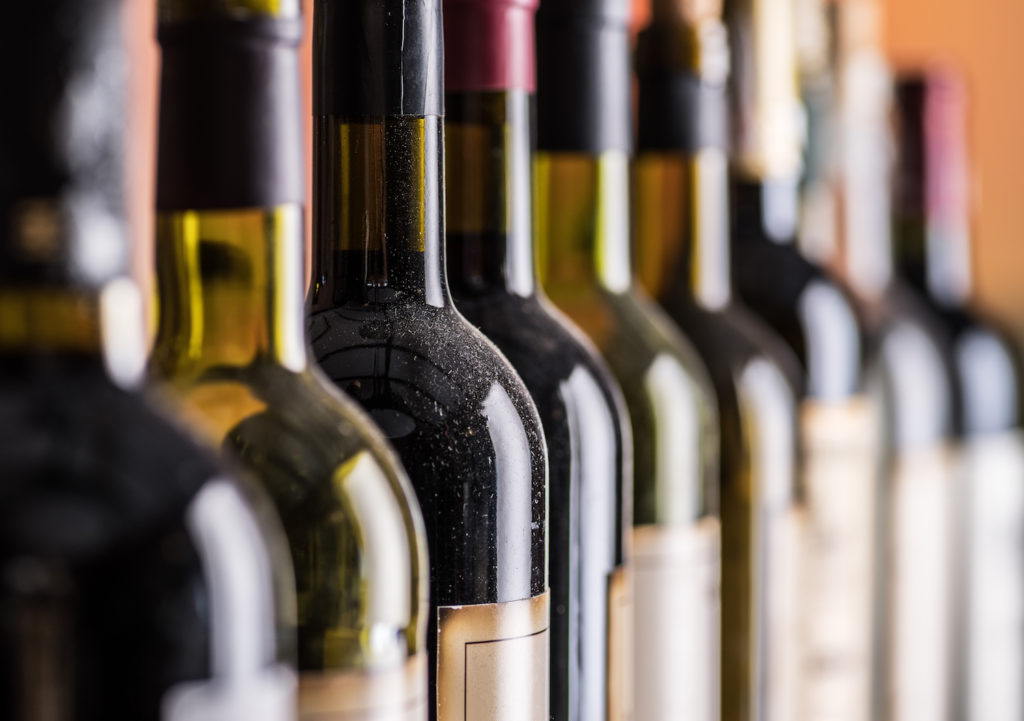
No matter how prepared your wine cards are, y'all're not going to walk into a wine shop, option up a bottle of Vigonier and find the words "total, creamy, floral, and fruity" emblazoned on the label.
Well, yous might. But probably not.
Wine bottles are ofttimes crafted under the conceit that whoever is picking it up already knows what it is. (Or tin deduce it from the cryptic and multilingual bottles.) This is one of the reasons beginners find it so difficult to branch out.
Simply most bottles will include some cardinal points of data that will assistance you: producer/vineyard, region, varietal, vintage, and ABV. Wine Folly has a very like shooting fish in a barrel guide to reading wine bottles for beginners.
- The producer/vineyard will unremarkably be labeled very clearly, frequently with a company symbol. Information technology gets a little more confusing on One-time World bottles from French republic, Portugal, or Italia. You may demand to enquire for help from a shopkeeper for those. Merely apply context clues like "Château" or "Domaine," and you'll find it.
- The region is most conspicuously marked on U.s.a. bottles with "Napa Valley," "Willamette Valley," or "Sonoma Valley."
- Varietal means the appellation or blazon of wine: Chardonnay, Cabernet Sauvignon, Pinot Grigio, Syrah, etc. Y'all'll notice this marked somewhere on near New and Old World bottles. Merely some Old World bottles do have specific or lesser-known names that can make them hard to place. If you lot tin't find an obvious diverseness, ask your shop bellboy.
- Vintage is very simply the year of the vino. Yous shouldn't have whatever difficulty finding this as it'southward on nearly bottles. But some, like port, might include the harvesting and bottling year equally well.
- ABV is simply alcohol by volume. You'll find this in a percentage, usually in small font somewhere at the lesser. College ABV ways higher booze per centum and therefore usually a more intense alcoholic annotation.
- Old World bottles tin can be hard to decipher, particularly when you're only starting out. Inquire for help! When you are buying your first bottles, try to stick to varietals you lot can identify.
Next Steps:
Alright. You've done your taste test. You've listed your vino words. And you've picked out wine types y'all know you like. What exercise you exercise next?
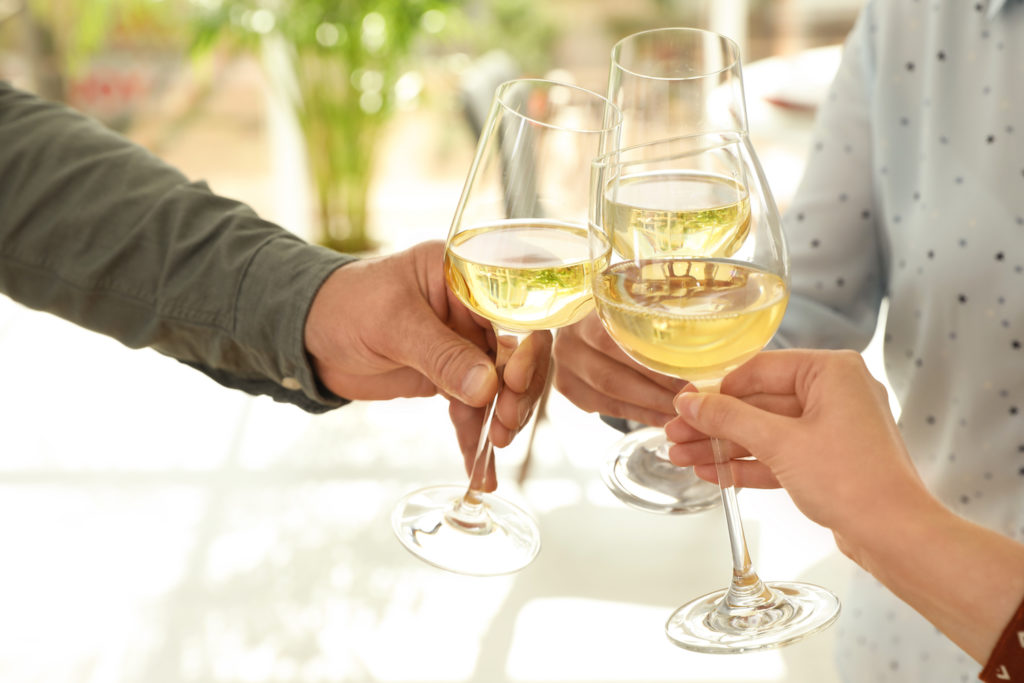
Aggrandize and Experiment
Use your Words:
At present that you've got your list of words, y'all tin start branching out beyond your six bottles. Take your wine words in to a store and ask the local shop owner to assist yous pick out wines that have those characteristics.
Try Different Vineyards:
And if yous really liked a sure type of wine, say Pinot Noir, make sure you try another vineyard's version of it. Learning which vineyards you like best is also essential.
Or, ask for a new wine similar to Pinot Noir if yous want to branch out in a new direction.
Temperatures:
Effort drinking your favorite wines at slightly different temperatures. Chill a cherry-red just a bit and see if that cuts downwards on tannins. Allow your favorite white wine warm upwardly to nearly room temperatures to see if you detect it less acidic.
Pairings:
Wine is a communal drink, and we usually share a glass with friends over dinner.
Cheese is a archetype, but don't end there! You'll be surprised at the unique flavors y'all'll get when you observe the perfect pairing.
If you need guidance here, effort this Crimson Wine and Meat Pairing Guide or this White Wine and Fish Pairing Guide. And, of course, don't forget about dessert.
Don't get stuck saying "Oh, I hate Sauvignon Blanc."
You tried Sauvignon Blanc this time, and absolutely hated information technology. Okay. Fine. (Weirdo.)
Just don't avoid it for the rest of your life. Why?
First of all, no two wines are exactly the aforementioned.
Wines change based on where in the globe they are made. (Example: Warmer New Zealand creates more than tropical flavored Sauvignon Blanc. Cooler France creates much more than citrusy bottles.) So you may hate New Zealand Sav Blanc, merely love French Sancerres!
But taking it a step farther, vino flavors change based on the vineyard, the winemaking techniques, possible blending. So you may dislike Riesling from 1 vineyard, just really like the manner they brand it at another.
2nd, your tastes modify.
Remember when you were piddling and absolutely hated tomatoes? And now you eat them all the time.
Our taste buds transform and even die off equally we historic period. And so a vino you hate now may get your favorite in a few years. Don't hesitate to try it again. Particularly if someone y'all trust most vino is offering you a glass!
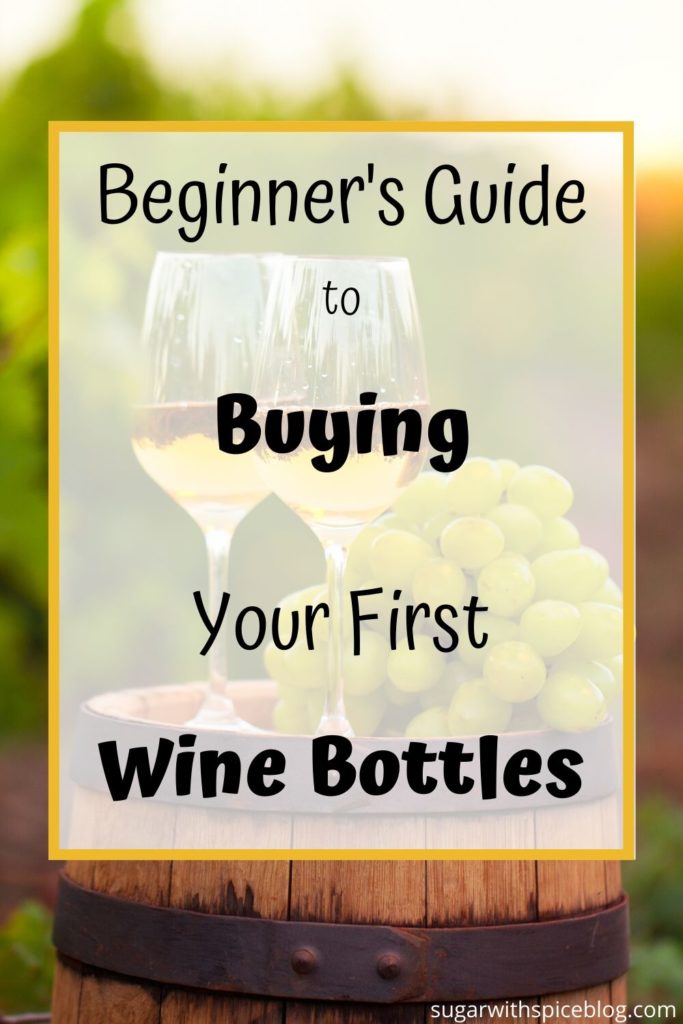
Most Importantly…
Enjoy it. This procedure should be fun and informative. Remember, you're trying to find wines you like. You shouldn't feel pressured to like something you don't. And you shouldn't feel light-headed if you can't taste specific notes in a "highly rated bottle."
This is about your taste, your preference, your wine. Who cares what anyone else thinks.
You won't get an practiced overnight. And you really don't need to be an proficient to just enjoy a glass of your favorite vino!

myersouldives1973.blogspot.com
Source: https://www.sugarwithspiceblog.com/how-to-find-wine-you-like/
0 Response to "How to Find Out What Wine You Like"
Post a Comment